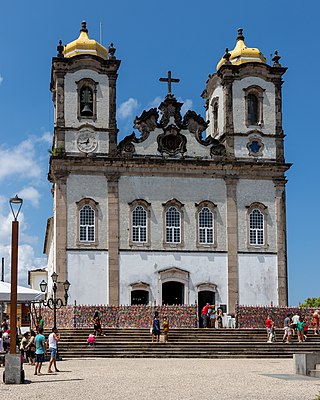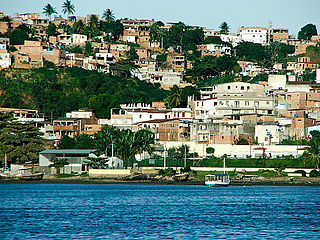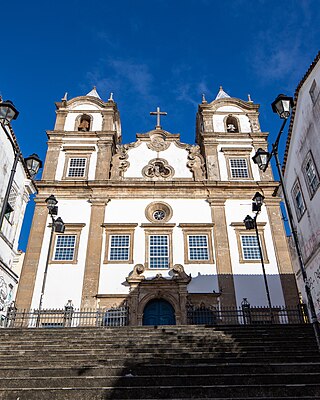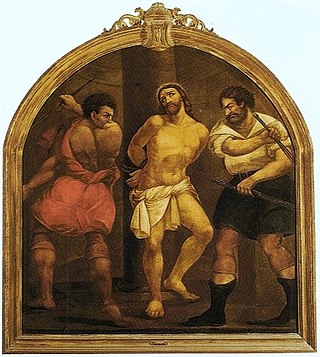
Obatala is an orisha in the Yoruba religion that is believed to have been given the task to create the Earth but failed the task by being drunk on palm wine and was outperformed by his little brother Oduduwa. As punishment for his negligence to the task he was given the job to create humans beings. This was authorized by his father, Olodumare which gave Obatala the name sculptor of mankind. According to Yoruba beliefs, Obatala was in charge of the complexion of humans after moulding them. Those he fairly burnt are thought to be Europeans, while those he forgot in the fire due to his drunkenness are believed to be the Africans. Those he forgot to burn are believed by the Yoruba religion to be present day 'albino'.
"Now Olodumare [the supreme being] once called on Obatala and told him that he would love him to assist in creating human beings that would live in the world he was about to create. This is because as he (Olodumare) said further he would not like the world he was planning to create to exist without human beings."

Holy Week is the most sacred week in the liturgical year in Christianity. For all Christian traditions it is a moveable observance. In Eastern Christianity, which also calls it Great Week, it is the week following Great Lent and Lazarus Saturday, starting on the evening of Palm Sunday and concluding on the evening of Great Saturday. In Western Christianity, Holy Week is the sixth and last week of Lent, beginning with Palm Sunday and concluding on Holy Saturday.

Bahian Carnival is the annual carnival festival celebrated in the Brazilian state of Bahia, mainly in its capital, Salvador. The event officially lasts for six days, beginning on the Thursday before Ash Wednesday and concluding on Ash Wednesday at noon. The term may also be used to comprise related events that happen immediately before or after, extending the duration for up to twelve days.
Easter is one of the most significant events in the religious and social calendar, celebrated heavily in the European country of Malta.

The Archdiocese of São Salvador da Bahia is part of the Roman Catholic Church in Brazil. The Archbishop of São Salvador da Bahia also carries the title Primate of Brazil. The archdiocese is located in the city of Salvador, Bahia.

The Church of Our Lord of Bonfim is the most famous of the Catholic churches of Salvador, in the State of Bahia, Brazil. It was built in the 18th century on the only line of hills in the Itapagipe Peninsula, in the lower town of Salvador. The church is the subject of intense religious devotion by the people of Salvador and is the site of a famous celebration held every year in January, the Festa do Senhor do Bonfim. The church is the cathedral of the Roman Catholic Diocese of Bonfim. The church is noted for the Festa do Bonfim, held annually the second Thursday after Three Kings Day. The festival combines elements of both Catholicism and Candomblé. It was listed as a historic structure by the National Historic and Artistic Heritage Institute in 1938.

The Historic Center (US) or Centre of Salvador de Bahia in Brazil, also known as the Pelourinho or Pelo, is a historic neighborhood in western Salvador, Bahia. It was the city's center during the Portuguese colonial period and was named for the whipping post in its central plaza where enslaved people from Africa were publicly beaten as punishment for alleged infractions. The Historic Center is extremely rich in historical monuments dating from the 17th through the 19th centuries.

Our Lady of Piat is a 16th-century Roman Catholic icon of the Blessed Virgin Mary enshrined in a minor basilca situated in Piat, Cagayan, Philippines. It is the town's and the province's patroness and is one of the most venerated Marian images of Mary in the Philippines, referred to as the "Mother of Cagayan".
The Holy Week in Braga is the most imposing, attractive and famous among all in Portugal, and the most important tourist and religious event in the city of Braga. It is estimated that about 100.000 people attend the major processions. It combines harmoniously elements of the liturgy and of popular piety, ancient traditions and innovation. Since November 2011, this event is officially “Declared of Interest to Tourism”.

The Itapagipe Peninsula is a peninsula located in the city of Salvador, capital of the Brazilian state of Bahia. The peninsula comprises Administrative Region III, including the neighborhoods of Alagados, Boa Viagem beach, Bonfim, Monte Serrat, Ribeira, Uruguai, Mares, Roma, Caminho de Areia, Vila Ruy Barbosa, and Massaranduba, among others. Rua Fernandes Viêira and Avenida Afrânio Peixoto roughly form a boundary between the peninsula and the city of Salvador. The Church of Our Lady of Penha, one of the earliest structures, occupies the northern tip of the peninsula.

Our Lady of Miracles is the patron saint of the town of Alcamo.

The Church of the Blessed Sacrament at Rua do Passo is an 18th-century Roman Catholic church in Salvador, Bahia, Brazil. It is dedicated to the Blessed Sacrament. The Church of the Blessed Sacrament at Rua do Passo was listed as a historic structure by National Institute of Historic and Artistic Heritage (IPHAN) in 1938 and is part of the Historic Center of Salvador UNESCO World Heritage Site.

The Church of the Third Order of Our Lady of the Rosary of the Black People is an 18th-century Roman Catholic church in Salvador, Bahia, Brazil. Construction of the church took almost 100 years. It is dedicated to Our Lady of the Rosary and belongs to the Archdiocese of São Salvador da Bahia. The church was listed as a historic structure by National Institute of Historic and Artistic Heritage (IPHAN) in 1938 and is part of the Historic Center of Salvador UNESCO World Heritage Site.

The Church of Saint Lawrence is a 17th-century Roman Catholic church located in Itaparica, Bahia, Brazil. The church is dedicated to Saint Lawrence, the patron saint of the island of Itaparica. It was built early in the Portuguese settlement of Brazil as part of the plantation of Gabriel Soares de Sousa. The Church of Saint Lawrence was listed as a historic structure by National Institute of Historic and Artistic Heritage (IPHAN) in 1952. 90% of the collection of religious objects and images were stolen from the church in 2010; they were never recovered.

José Teófilo de Jesus was a Brazilian painter and gilder. He is the most noted representative of the Escola Baiana or Bahian School of painting. His work was eclectic, characterized by the passage from the Baroque to the Rococo, with reference to Neoclassical traits. De Jesus was of pardo, or mixed ethnic ancestry and lived into his nineties; little else is known of his life. His production was apparently vast, but many of his works are only identified by oral tradition. Although he is known as one of the great names of the Brazilian Baroque, and one of its final artists, details of his life and a full account of his works remain unclear.


José Rodrigues Nunes was a Brazilian artist who worked primarily in Salvador, Bahia. He was primarily a painter, but also worked in the fields of decoration, restoration, and set design. He was a student of Franco Velasco (1780-1833) and is the final painter of the Bahian School of Painting. Nunes taught drawing at Liceu Provincial de Salvador between 1837 and 1859. His students included Olímpio Pereira da Mata, Macário José da Rocha, João Francisco Lopes Rodrigues (1825-1893), Francisco da Silva Romão, and his son, Francisco Rodrigues Nunes. In addition to being a teacher, he worked as a scenographer at the São José Theater for many years. He is considered one of the representatives of the final phase of Bahian colonial painting. A series of paintings by Nunes is part of the personal collection of the Bahian physician Jonathan Abbot (1796-1868). He also produced portraits of Bahian religious figures and politicians.

Our Lady of the Rosary Parish is a Brazilian Catholic ecclesiastical circumscription located in the municipality of Pirenópolis, in Goiás, created in August 1736 with the establishment of Vila de Meia Ponte as a parish. Since its origin until 1745, it was part of the jurisdiction of the Diocese of Rio de Janeiro. Later, it became part of the Diocese of Goiás until 1956. Between 1956 and 1966 it was included in the territory of the Diocese of Goiânia, and from 1966 on, it has been in the Diocese of Anápolis, in Pastoral Region 03.

Afro-Brazilian culture is the combination of cultural manifestations in Brazil that have suffered some influence from African culture since colonial times until the present day. Most of Africa's culture reached Brazil through the transatlantic slave trade, where it was also influenced by European and indigenous cultures, which means that characteristics of African origin in Brazilian culture are generally mixed with other cultural references.

















